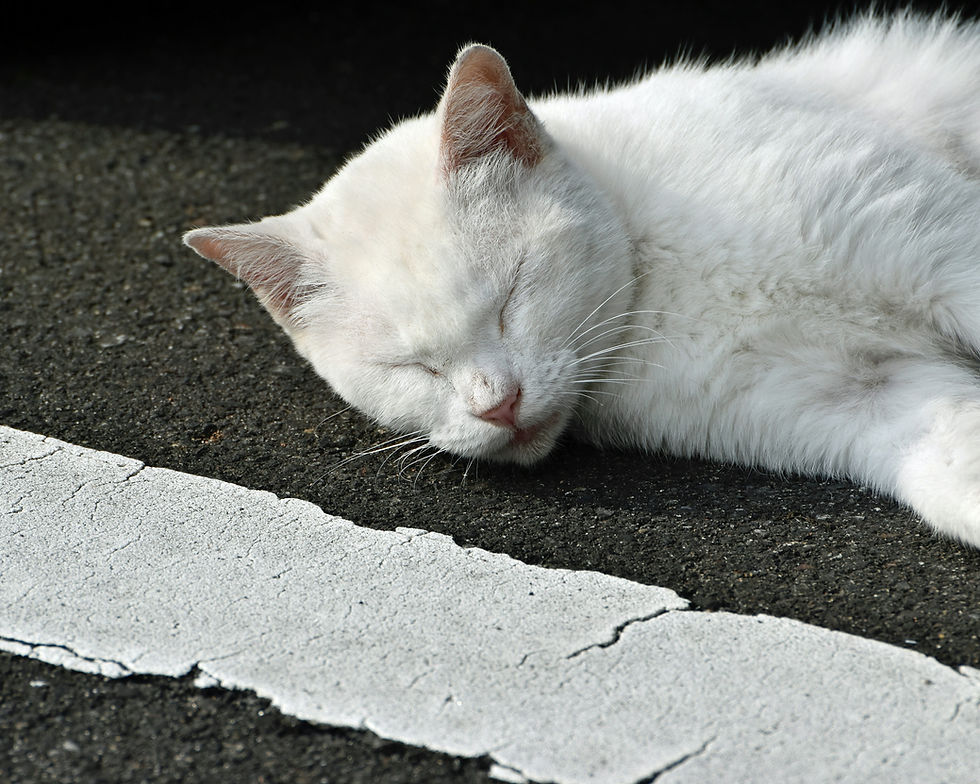Causes of FIP: The Feline Coronavirus Connection
- CureFIP GCC

- May 20
- 3 min read
Feline Infectious Peritonitis (FIP) is a serious and often fatal disease in cats caused by a mutated form of the feline coronavirus (FCoV). Although FCoV is widespread and often harmless, in a small percentage of cats, it mutates into a lethal virus that leads to FIP. This article explains the science behind this mutation, the risk factors involved, and how cat owners in the GCC region can reduce their cats' chances of developing this devastating disease.

🐾 Introduction: What is FIP?
Feline Infectious Peritonitis (FIP) is a complex disease affecting cats, especially kittens and young cats under the age of 2. It is caused by a mutation of a benign virus—the feline coronavirus (FCoV).
There are two main types of FIP:
Wet (Effusive) FIP: Characterized by fluid buildup in the abdomen or chest.
Dry (Non-effusive) FIP: Characterized by inflammation in organs like the brain, eyes, or kidneys.
Historically, FIP was almost always fatal. However, recent advances in antiviral therapies—especially those offered by CureFIP GCC—have drastically changed that outlook.
🦠 The Feline Coronavirus (FCoV): Common but Usually Harmless
FCoV is a common intestinal virus found in cats, especially in multi-cat households, catteries, and shelters.
Key facts about FCoV:
Transmission: Passed through the fecal-oral route. Cats become infected by ingesting the virus when grooming themselves or sharing litter boxes.
Prevalence: Studies estimate 40–90% of cats in multi-cat environments carry FCoV.
Symptoms: Most infected cats show mild or no signs, such as transient diarrhea or soft stools.
FCoV typically infects the intestinal lining and is shed in feces. Many cats clear the virus or become chronic carriers without developing FIP.
🔬 How FCoV Mutates into FIP
In approximately 5–10% of FCoV-infected cats, the virus mutates within the body. This change allows it to infect and replicate inside white blood cells (macrophages), spreading throughout the body and triggering a severe inflammatory immune response.
This mutation leads to:
Vasculitis (inflammation of blood vessels)
Fluid leakage into body cavities (in wet FIP)
Granuloma formation in organs (in dry FIP)
Neurological and ocular symptoms in advanced dry FIP cases
The exact reason why FCoV mutates in some cats is still being researched, but several risk factors have been identified.
⚠️ Risk Factors for Mutation and Disease
Certain conditions make a cat more vulnerable to developing FIP after FCoV exposure. Understanding these risk factors is especially important in the GCC region, where high temperatures, dense indoor housing, and pet importation can amplify risks.
1. Age
Kittens (3–18 months) are at the highest risk.
Immature immune systems may struggle to control the virus.
2. Stress
Moving to a new home, surgery, travel, or vaccination can weaken the immune response, allowing FCoV to mutate.
3. Overcrowding
Shelters, catteries, and pet shops often create high-stress environments with constant exposure to FCoV.
4. Weakened Immunity
Cats with FeLV (Feline Leukemia Virus) or FIV (Feline Immunodeficiency Virus) are more vulnerable to viral mutation.
5. Genetics
Certain purebred cats (Bengals, Abyssinians, Persians) show a higher incidence, suggesting genetic predisposition.
🔁 Transmission Among Cats
A common misunderstanding is that FIP itself is contagious. The truth is more nuanced:
FCoV is contagious and spreads via shared litter boxes, food bowls, and grooming.
FIP is not directly contagious. The mutated virus (FIPV) does not spread between cats. Each case of FIP results from an internal mutation in the individual cat.
This means your healthy cats are not automatically at risk if one cat develops FIP, but they may carry FCoV and should be monitored.
🛡️ Conclusion & Early Prevention Tips
FIP is triggered by a mutation of the common feline coronavirus, not by exposure to a “FIP virus” in the traditional sense. Preventing FIP, therefore, means reducing exposure to FCoV and supporting immune health.
📝 Tips to Reduce FCoV & FIP Risk:
Keep litter boxes clean and away from food/water bowls.
Limit the number of cats in enclosed spaces.
Minimize stress during relocation or the introduction of new pets.
Avoid early weaning and allow kittens to stay with their mothers longer.
Regular vet checkups to screen for immune-compromising conditions.
And if your cat is diagnosed with FIP, early treatment with antiviral medication such as GS-441524 can result in full recovery. CureFIP GCC offers safe, effective FIP treatment options with expert guidance tailored to your cat’s needs.
.png)



Comments